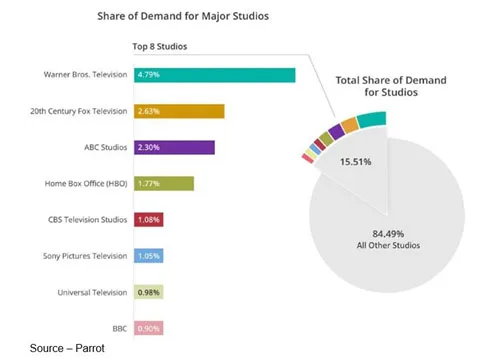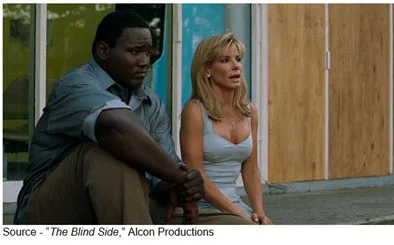Distribution or Content … Don’t Forget the Consumer

The recent IBC was more exciting and uncertain than it has been in years.
It was exciting because the industry is moving at breakneck speed with new ideas, new enthusiasm and new opportunities in every hall; now that everyone seems to have accepted that all things are IP.
The only issue was that no one was exactly certain where the M&E industry is going to end up or what it’s going to look like—even by this time next year.
They just (silently) hope they have more content, more eyeballs than the next guy.
To fill their rosters, most of the buyers spent the week before IBC at TIFF (Toronto International Film Festival), working to identify new audience drivers for their services.
In the last few years, consumers have turned the industry on its head by deciding they were going to watch what they want, when they want, how they want.
If the traditional TV and content delivery folks (cable, telco) didn’t like it, wouldn’t deliver it … hit ‘em where it hurts.
Folks were suddenly free from the limited content menu:
- going to a theater to watch a good/great film and enjoy a “$25” box of popcorn
- having a sub-standard relationship with the cable guy for a TV bundle of foreign/local shows (90 percent of which they didn’t want, didn’t watch)
People – mostly led by teens – took control of their video viewing habit!
The industry has been responding by simultaneously expanding their offerings and merging to ensure organizations get their unfair share of the seemingly unquenchable market opportunity.
Content developers/owners have also been trying to figure out how they can get their stuff in front of more folks. Distributors and gatekeepers want to get more people in theater seats and want tonsign up rebound screen subscribers…not just in their country, but globally.
This year’s IBC was one of the richest, most information-packed events with sessions on what new technologies/products and services the industry can expect to create and deliver content to win over and satisfy the hungry horde.
More importantly, there were informative sessions with people who were coopetitors (cooperative competitors) sharing ideas, information and thoughts.
Maybe the program was so meaty was that IBC management had placed heavy emphasis of diversity and inclusivity. Very knowledgeable female speakers – 30 percent of the speakers – took the stage to share ideas, facts, information.
With the industry landscape changing, we really need “all hands on deck;” and that means all.
Changes are affecting every segment of the content creation and delivery marketplace.

“The biggest impact of the OTT trend is that the industry has stripped away all of the business barriers for today’s content arena,” said Allan McLennan, Chief Executive of PADEM Media Group and one of the earliest people in the OTT and on-demand programming field.
“The advancement of OTT worked to eliminate strategic, economic and even national border issues for providers and consumers,” he observed. “It has provided choice for audiences, which has naturally expanded and increased the value of the content. And, in most cases, it has dramatically upset the role and value of traditional linear networks and content aggregators.”
That was obvious the week before IBC because content scouts were easy to pick out in the Toronto crowds.

Despite the on-and-off drizzle, one of the largest film events on the planet, attracted some of the biggest names in the visual storytelling industry.
Content owners/producers like to use the event to build Oscar buzz for their high-profile pics.
It’s also a chance for Indie filmmakers who have worked for months/years to get their projects in front of folks with hefty checkbooks.
No one, not even Jeff Bezos, can afford the time or money to meet their own video content library needs.
Folks intent on making money off someone else’s creative work need endless variety – serialized dramas, documentaries, shows and films – to attract and retain subscribers who want to time-shift and binge watch nationally and globally.
Toronto isn’t just a film festival stop over like Cannes, Telluride and Sundance. The town has been a great visual creative center doing front-end co-production with distributors in other countries for years.
The demand for quality OTT content has given the city’s creative industry a “nice” boost.
It certainly isn’t the “brisk” winters!
But Fall is perfect for TIFF content creators/producers hoping to sell their projects as well as Netflix, HBO, Hulu and studios hoping to snag an Oscar or two later this year.
This year’s event included 300-plus films/projects (121 directed or co-directed by women, 35 percent of the titles), lots of acting/producing stars, busloads of bodyguards and hordes of star worshipers.

In addition to spotlighting some of their own projects that are award contenders (112 Emmy nominees and a decent number of Oscar hopefuls), Netflix was there to buy.
Of course, Netflix’s checkbook had to contend with Sony, Apple, Neon, Cohen Media, Entertainment Studios, Bleecker Street, The Orchard, A24, IFC, 30West, Amazon and HBO—okay, every content distributor.
There were no really bad shows at TIFF and the best went fast like:


OTT has certainly democratized the opportunities for today’s visual storytellers by giving consumers literally a world of viewing options for content of all types, including social media stuff we find less than interesting.
We really have nothing against the YouTube, IGTV, Snapchat youngsters with iPhones or borrowed cameras who took an idea and caught the interest of 100,000-plus Gen Zers.
After all, because of their work, teens got into the habit of watching everything on their smartphones and millennials/boomers figured what the heck, it’s gotta be good for news, docs, series, movies, long/short content.
While it’s a rotten pun, Robert Redford went out with a bang at TIFF premiering what he said will be his final film, The Old Man & The Gun.
Nice way to go out … on top.
An important segment of the TIFF attendance (to us anyway) were the content professionals from the Toronto film community like Andrew MacDonald, creative director at Cream Productions.
Andrew and his co-creative director Tristan Cezair took a break for the work they’ve been doing for Hulu, other studios and the usual hush-hush projects to critique, study and get hints from the work of others being shown at TIFF.

“Film and content producing/production is complex and constantly changing,” MacDonald noted between TIFF tutorial sessions. “It’s a strong balance between art, technology, technique that you never completely master because you always have a constant cloud over your head … deadlines and finance.
“TIFF is a great opportunity to study and analyze project work, learn new or relearn old techniques and come away with new ideas and a real appreciation of the work we and other professionals do,” he noted.
“It’s a fun, constantly changing and challenging industry,” MacDonald said. “For the Indie who knows his/her stuff, opportunities are

“Still knowing the innerworkings of the industry and projects as I do,” he observed, “it’s still a miracle that any movie/show gets made. Fortunately, there are enough committed and talented Indies who want to tell visual stories that miracles happen.”
He’s right!
Excluding the iPhone, YouTuber and the “hey I’ve got a camera, a barn and some free time, so let’s make a film” people; there’s an estimated half-a-million professional Indies – shooters, producers, EPs, DITs, editors and production/post audio/visual people – around the globe.
Without them, there wouldn’t be a $325B digital video storytelling industry.
People like to write volumes about how in the U.S. OTT subscriptions will soar past $21.2B by 2020 and presently Netflix, Amazon, Hulu will dominate the revenues. They even give passing credit to Disney, CBS, ABC, Warner and the growing number of DTC people who see nothing but profits.
They gloss over the fact that they all need content and stuff happens.
“It’s been evident at IBC that there’s clearly a demand for high-quality video services and content around the globe,” McLennan noted, “The keys are having the right price, the right content and the right network connection to provide the best viewer experience.
“It’s more important and more difficult than it sounds,” he continued. “Exclusive content, appropriate pricing along with a seamless way to pay for that content will be the key to acquiring new subscribers and retaining existing subscribers.”
“Those issues are ‘relatively’ straight forward to solve,” McLennan added, “but because there is such a great need to provide more and more good to great, content, it’s not only where the money’s coming from, but how to extend these budgets. This is where technology through AI can and will bring change. It used to be keeping jobs locally, now what is being asked is also how to realign those jobs locally, so our area production experts are supported as well as our culture and way of life evolves versus erodes.”
In English-language markets, such as the US and Canada, production spending is growing at 7 percent annually in the US and 5 percent in Canada. In European markets such as Sweden and Germany, growth is much more modest – 3 percent in Sweden, less than 1 percent in Germany.
The long-term impact of the emerging OTT DTC market is still uncertain, unproven and … unregulated.
Content expenditures will continue to be robust for the foreseeable future as consumer demand for good/great content grows.
The demand will increase production revenues for professional Indie filmmakers
Increasingly, policymakers are establishing domestic production quotas, imposing robust tax subsidies and realigning their regulation of tomorrow’s borderless distribution system to keep their country competitive in the global multiplatform market.
 They may have to adjust their thinking about “managing” information in their country to satisfy the information and entertainment wants and needs of citizens.
They may have to adjust their thinking about “managing” information in their country to satisfy the information and entertainment wants and needs of citizens.
When they do, they may hear themselves repeat Leigh Anne Touhy, “No, he’s changing mine.”
# # #